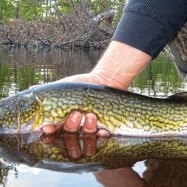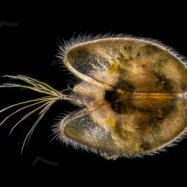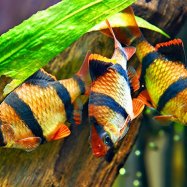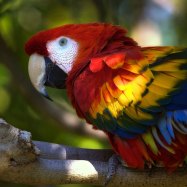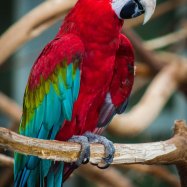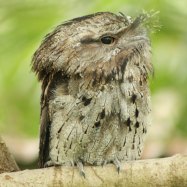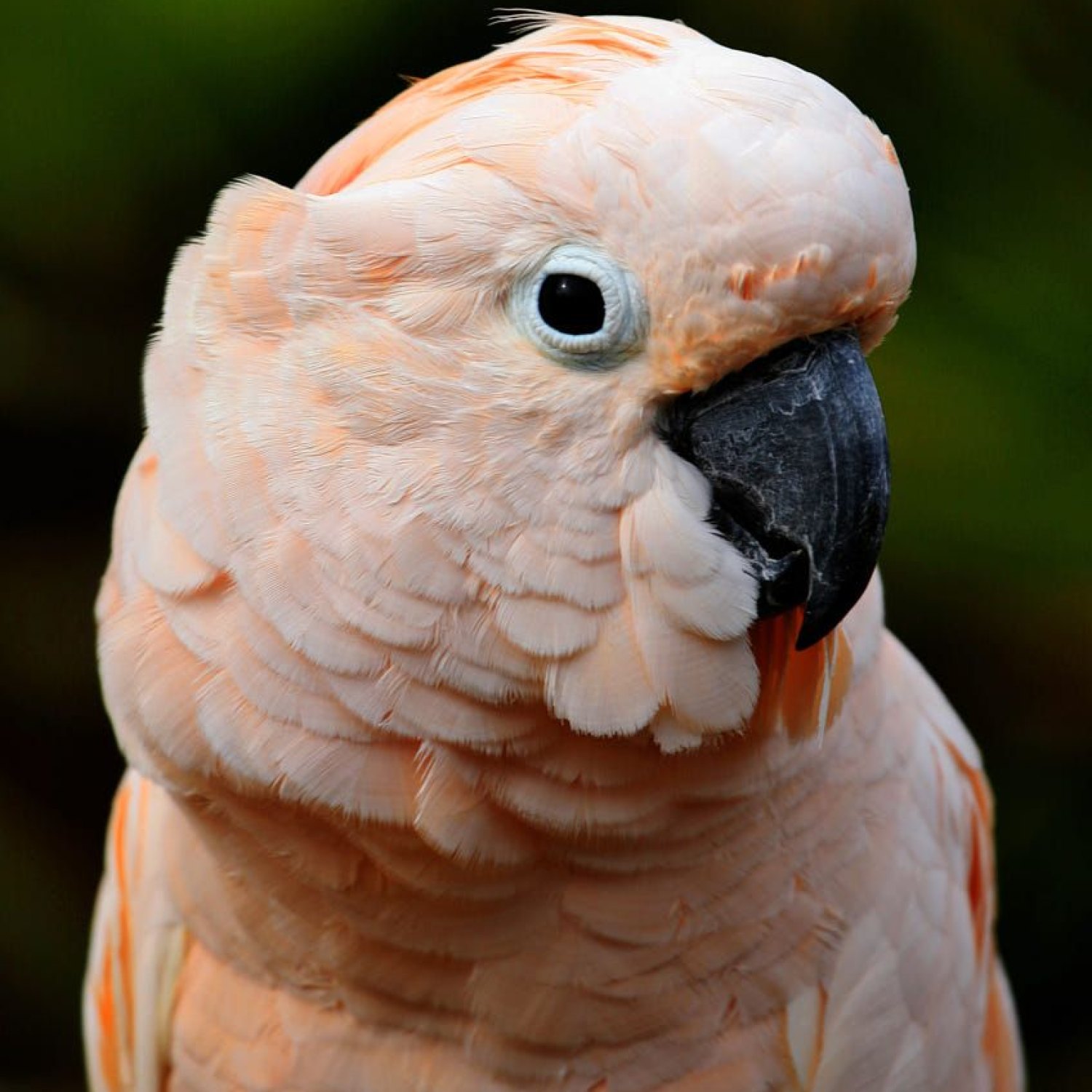
Pink Salmon
About 30-76 cm (12-30 in)
Did you know that Pink Salmon, also known as humpback salmon, can grow up to 30-76 cm (12-30 in) in length? These beautiful fish can be found in coastal areas and rivers, with their streamlined and elongated bodies making them fast and agile swimmers. They belong to the Salmonidae family and are an important part of the aquatic ecosystem. #PinkSalmon #Animals #Salmonidae
Animal Details Summary:
Common Name: Pink Salmon
Kingdom: Animalia
Habitat: Freshwater, estuarine, and marine environments
Pink Salmon: The Beautiful and Mighty Fish
Pink Salmon, scientifically known as Oncorhynchus gorbuscha, is a highly sought-after species of fish with a distinct pink hue. These beautiful creatures can be found in the Pacific Ocean, specifically in North America (Canada and the United States), and Asia (Russia and Japan). They are primarily known for their delicious taste and contribute significantly to the economy and food industry. However, there is much more to know about these fascinating creatures besides their delicious meat Pink Salmon.In this article, we will delve deeper into the world of Pink Salmon, exploring their scientific classification, habitat, feeding habits, geographical distribution, and more. So, let's dive in and discover the many wonders of the pink salmon.
The Scientific Classification of Pink Salmon
Pink Salmon belongs to the Animalia Kingdom, which is the largest and most diverse kingdom of organisms. They belong to the Phylum Chordata, which includes all animals with a spinal cord. Within this phylum, they are classified under the Class Actinopterygii, which consists of bony fish with fins supported by rays.Pink Salmon belongs to the Order Salmoniformes, which includes all types of salmon, trout, and char. They are a part of the Salmonidae family, which is the largest family of freshwater fish. They are closely related to other salmon species, such as the Chinook, Coho, and Sockeye salmon.
The Habitat of Pink Salmon
Pink Salmon can be found in various freshwater, estuarine, and marine environments Pangolin. They are anadromous, which means they can live in both freshwater and saltwater. This unique adaptation allows them to migrate between the two environments throughout their life cycle.Naturally, Pink Salmon spawn in rivers, streams, and lakes, where they lay their eggs in gravel beds. After hatching, the young salmon stay in freshwater for about a year before migrating to the ocean. They spend most of their adult life in the ocean, feeding and growing, before returning to the freshwater to spawn and complete their life cycle.
Feeding Method
As carnivorous fish, Pink Salmon mainly feed on small fish, shrimp, and plankton. They use their sharp teeth to catch and consume their prey. Young pink salmon primarily feed on zooplankton, while the adults rely on larger prey. This feeding method makes them a vital part of the marine food chain, as they control the population of smaller animals and maintain balance in the ecosystem.Geographical Distribution and Country of Origin
Pink Salmon is native to the Pacific Ocean and can be found along the coast of North America and Asia. They have a wide geographical distribution, from the Alaskan Peninsula in North America to the Arctic coast of Siberia in Asia. However, they are most abundant in the waters of Russia, Alaska, and Canada.In North America, the most significant runs of Pink Salmon occur in the Fraser River in British Columbia, Canada, and the Alaskan Peninsula. In Asia, the largest runs are in Japan and Russia, specifically in the Kamchatka Peninsula and Sakhalin Island. These regions are the primary production centers for Pink Salmon.
Appearance and Body Shape
Pink Salmon has a distinct body shape that sets them apart from other salmon species. They have a streamlined and elongated body, with a tapered head and a forked tail. This shape makes them highly efficient swimmers, allowing them to swim long distances during their migration.In terms of appearance, Pink Salmon has a bright silver body with a distinct bluish-green back and a pinkish hue on their sides. This pink hue is where they get their name and is more prominent in the males, especially during the spawning season. During this time, the males also develop a characteristic hump on their back, making them easily distinguishable from the females.
Size and Life Expectancy
Pink Salmon is relatively small compared to other salmon species, with an average length of about 30-76 cm (12-30 in). The males are slightly larger than the females, but both have similar body shape and coloration. They are also lightweight, with the average weight of a fully grown adult being around 1.5-2.5 kg (3.3-5.5 lbs).In terms of life expectancy, Pink Salmon typically live for 2-3 years in the wild. However, in hatcheries or captive environments, they can live for up to 4 years. Their short life span is due to their unique reproductive cycle, where they return to freshwater to spawn and die after completing their mission.
Ecological Impact of Pink Salmon
Pink Salmon plays a crucial role in the ecosystem, as they are both predators and prey. They are an essential food source for larger fish, marine mammals, and seabirds, contributing to the food chain's balance. Furthermore, when they migrate to freshwater to spawn, they also carry essential nutrients from the ocean, fertilizing rivers and supporting the growth of aquatic plants.Moreover, Pink Salmon's economic importance cannot be overlooked. They are one of the most commercially valuable species of salmon, with a high demand for their delicious meat. Their annual migration also brings in a significant amount of tourism, as people travel from all over the world to witness this natural wonder.
The Threats Facing Pink Salmon
Despite their ecological and economic importance, Pink Salmon is facing numerous threats that are putting their populations at risk. One of the most significant challenges is habitat destruction, primarily due to human activities such as dam construction and pollution. This can disrupt the natural migratory patterns of Pink Salmon, affecting their ability to spawn and survive.Overfishing is also a significant threat to Pink Salmon. With their high demand in the food industry, they are often caught in huge numbers, depleting their populations. Climate change is another pressing issue, as rising ocean temperatures can impact the availability of food and disrupt their habitat.
Conservation Efforts for Pink Salmon
To protect and conserve Pink Salmon populations, various conservation efforts have been put in place. Governments and organizations are working towards creating sustainable fishing practices and regulating the fishing industry to prevent overfishing. Measures are also taken to protect their habitats and prevent further destruction.Furthermore, hatcheries have been established to raise and release Pink Salmon fry into the wild, boosting their population numbers. These efforts have proven successful in maintaining healthy populations of Pink Salmon and ensuring their survival for generations to come.
Interesting Facts About Pink Salmon
- Pink Salmon is also known as "Humpback Salmon" due to the hump that the male develops during the spawning season.- They have one of the longest migrations of any salmon species, traveling up to 3,000 kilometers from the ocean to their spawning grounds.
- Pink Salmon is considered one of the fastest fish in the world, swimming at a speed of up to 11 meters per second.
- Their unique pink hue comes from the astaxanthin pigment found in the krill and shrimp they consume.
- Male Pink Salmon are less colorful than females, as the pink hue on their sides fades after mating.
- Pink Salmon has a keen sense of smell, which helps them navigate back to their spawning grounds.
- They are the smallest and most abundant species of Pacific salmon, with an estimated total population of 500 million.
In Conclusion
Pink Salmon is more than just a delicious fish; they are an essential species in the marine ecosystem and play a crucial role in the economy and food industry. From their unique migratory patterns to their beautiful appearance, these fish are truly remarkable creatures. However, to ensure their survival and prevent their population from declining, it is vital to address the threats they face and continue with conservation efforts. Let us all work together to protect and preserve the mighty Pink Salmon for future generations to come.

Pink Salmon
Animal Details Pink Salmon - Scientific Name: Oncorhynchus gorbuscha
- Category: Animals P
- Scientific Name: Oncorhynchus gorbuscha
- Common Name: Pink Salmon
- Kingdom: Animalia
- Phylum: Chordata
- Class: Actinopterygii
- Order: Salmoniformes
- Family: Salmonidae
- Habitat: Freshwater, estuarine, and marine environments
- Feeding Method: Carnivorous
- Geographical Distribution: Pacific Ocean
- Country of Origin: North America (Canada and United States) and Asia (Russia and Japan)
- Location: Coastal areas and rivers
- Animal Coloration: Bright silver with a bluish-green back and a pinkish hue on their sides
- Body Shape: Streamlined and elongated
- Length: About 30-76 cm (12-30 in)
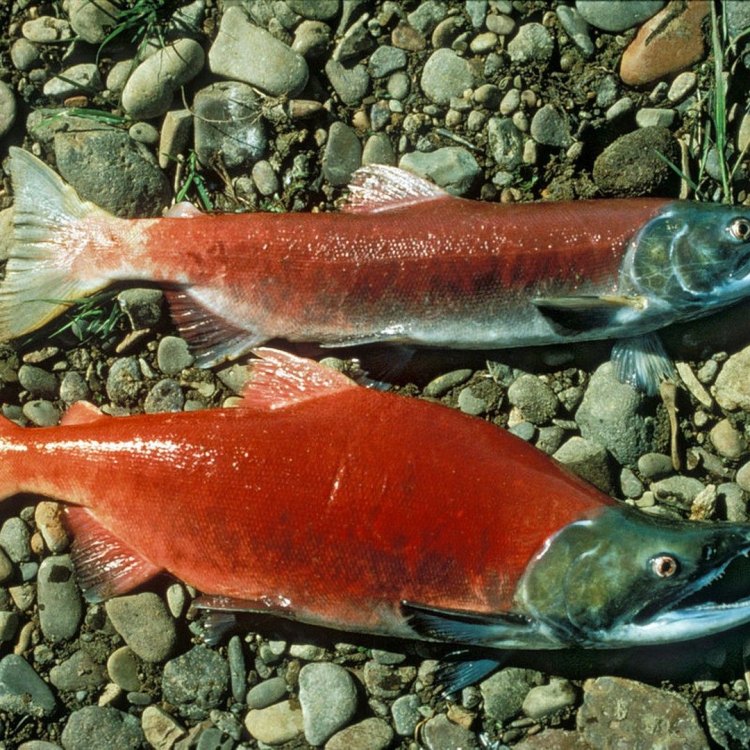
Pink Salmon
- Adult Size: About 60-80 cm (24-32 in)
- Average Lifespan: 2-3 years
- Reproduction: Anadromous
- Reproductive Behavior: Females lay eggs in freshwater, males fertilize the eggs externally
- Sound or Call: No specific sound or call
- Migration Pattern: Migratory, returning to their natal rivers to spawn
- Social Groups: Solitary, but may form schools during migration
- Behavior: Highly migratory, strong sense of smell to navigate back to their natal rivers
- Threats: Overfishing, habitat degradation, climate change
- Conservation Status: Least Concern
- Impact on Ecosystem: Important ecological and economic value as prey for various predators
- Human Use: Commercial and sport fishing
- Distinctive Features: Large black spots on their back
- Interesting Facts: Pink salmon have the shortest lifespan of all Pacific salmon species
- Predator: Orcas, sea lions, bears, eagles, and other larger fish
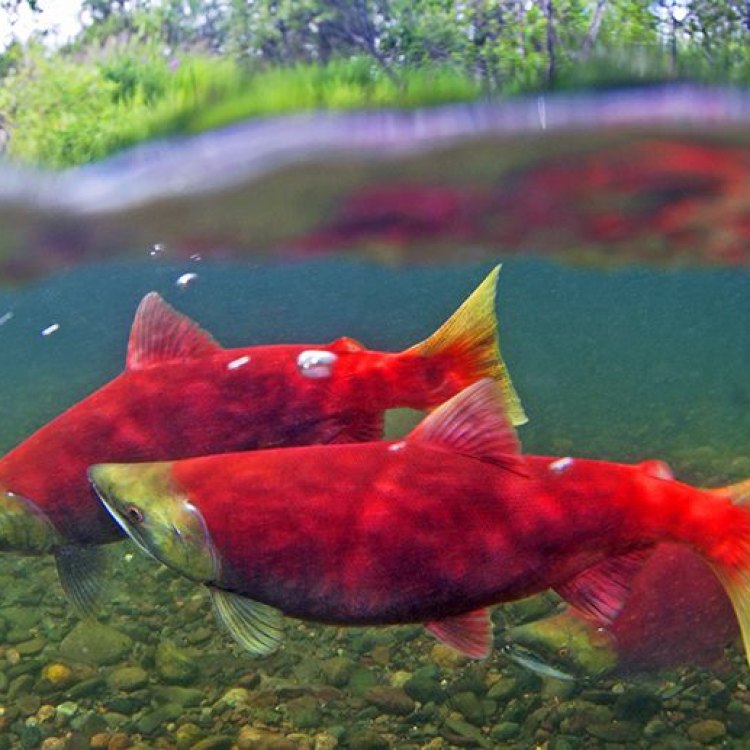
Oncorhynchus gorbuscha
The Fascinating Life of Pink Salmon: From Life Cycle to Conservation
Salmon are known for their incredible journey to their natal rivers for spawning. Among the several species of Pacific salmon, one stands out with its unique features and behavior – the Pink Salmon (Oncorhynchus gorbuscha).The Pink Salmon, also called humpback salmon or humpy, is the smallest and most abundant among the five Pacific salmon species. Its scientific name, Oncorhynchus gorbuscha, means "hooked snout" in Greek, a nod to its distinct snout during spawning season PeaceOfAnimals.Com. In this article, we will take a closer look at the fascinating life of Pink Salmon, from their size and lifespan to their behavior and impacts on the ecosystem.
Size and Lifespan
On average, Pink Salmon measure about 60-80 cm (24-32 in) in length. However, the largest recorded Pink Salmon was caught in Alaska, measuring a whopping 107 cm (42 in) and weighing 7.71 kg (17 lbs)! Unlike other species of salmon, Pink Salmon do not grow much larger in the ocean due to their short lifespan.
Speaking of lifespan, Pink Salmon have the shortest lifespan among all Pacific salmon species. They typically live for only two to three years, with most individuals dying after spawning. This limited lifespan plays a crucial role in their life cycle and behavior, which we will explore in the following sections.
Reproduction and Behavior
Pink Salmon are anadromous, meaning they migrate from saltwater to freshwater to spawn. They have a fascinating reproductive behavior, with females laying their eggs in freshwater and males fertilizing them externally Panda Pied Ball Python. This process is called spawning and usually occurs in the late summer or early fall.
Unlike other salmon species, Pink Salmon do not build nests called "reedd" for their eggs. Instead, females deposit their eggs in shallow depressions in the streambed, and males swim over to fertilize them. This process can take anywhere from a few days to a few weeks, depending on the size of the population.
After laying and fertilizing their eggs, both male and female Pink Salmon die, and their bodies provide essential nutrients to the stream ecosystem. The fry, or young fish, hatch from the eggs in the spring and begin their journey to the ocean. This leads to Pink Salmon's intriguing behavior of returning to their natal rivers to spawn.
Migration Pattern
Pink Salmon are highly migratory, traveling long distances from the ocean to their freshwater spawning grounds. They navigate using their strong sense of smell, which helps them find their way back to their natal rivers, even after years of being in the ocean.
These salmon travel upstream, facing numerous obstacles, including dams, waterfalls, and strong currents. To overcome these barriers, Pink Salmon have an incredible ability to jump and leap up to six feet out of the water! This behavior not only helps them reach their spawning grounds but also serves as a way to escape predators.
Social Groups and Behavior
Pink Salmon are solitary creatures for most of their life, but during migration, they may form schools to conserve energy. When swimming through the ocean, they use the "drafting" technique, where the lead fish creates a slipstream for others to swim in. This allows them to save energy and travel faster in a group.
Once they enter freshwater, Pink Salmon become territorial and aggressive towards other males. They will often fight over the best spawning sites, and the winner gets to mate with multiple females. This behavior is essential for the survival of the species as it ensures genetic diversity and increases the chances of successful reproduction.
Threats and Conservation Status
Like many other fish species, Pink Salmon also face numerous threats to their survival. Overfishing, habitat degradation, and climate change are the major factors that affect Pink Salmon populations. Climate change, in particular, has a significant impact as it alters ocean currents, water temperature, and ocean chemistry, impacting the salmon's food sources.
These threats have led to a decline in Pink Salmon populations, and as a result, they are listed as the Least Concern by the International Union for Conservation of Nature (IUCN). However, this doesn't mean that we can be complacent about their conservation. It is essential to continue monitoring their populations and take measures to protect their spawning grounds and ensure sustainable fishing practices.
Impact on Ecosystem and Human Use
Pink Salmon may be small in size, but they play a crucial role in the ecosystem. As prey for various predators, they provide important ecological and economic value. Their populations also indicate the health of their habitat and ecosystem. A decline in Pink Salmon populations can have a ripple effect on the entire ecosystem, affecting other fish, birds, and mammals that depend on them for food.
Human use of Pink Salmon mainly revolves around commercial and sport fishing. These salmon are an important source of food and income for many communities along their migration routes. However, overfishing can pose a significant threat to their populations and disrupt the balance in the ecosystem. It is essential to regulate fishing practices and ensure sustainable harvests to preserve Pink Salmon populations for future generations.
Distinctive Features and Interesting Facts
Pink Salmon can be readily identified by their distinctive appearance. They have a metallic blue-green back and a silver underside, with irregularly shaped black spots on their back. These spots serve as camouflage in their natural habitat, helping them blend into the rocky streambed.
One of the most fascinating facts about Pink Salmon is their incredible ability to change their appearance drastically during spawning season. Males develop a distinct hump on their backs, hence the nickname "humpback salmon," and their snouts become hooked. They also turn a deep pink color, giving them their common name, Pink Salmon.
Predators of Pink Salmon
As with any species, Pink Salmon also have predators. Orcas, sea lions, bears, eagles, and larger fish such as Chinook and Coho salmon all prey on Pink Salmon. These predators play a crucial role in maintaining balance in the ecosystem and preventing overpopulation of Pink Salmon. Their presence also indicates the health of the ecosystem and the availability of food sources.
In conclusion, Pink Salmon may be the smallest and most abundant of all Pacific salmon species, but they have a complex and fascinating life cycle. From their short lifespan and unique reproductive behavior to their highly migratory nature and impact on the ecosystem, Pink Salmon have captured the interest of scientists and nature enthusiasts alike. As we continue to learn more about these remarkable fish, it is crucial to take steps to protect and preserve their populations for generations to come.
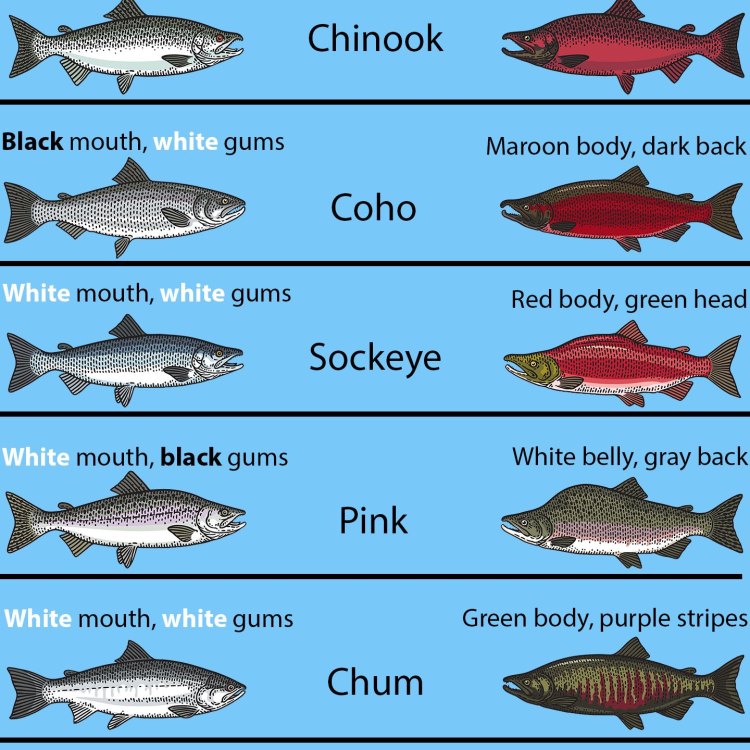
Pink Salmon: The Beautiful and Mighty Fish
Disclaimer: The content provided is for informational purposes only. We cannot guarantee the accuracy of the information on this page 100%. All information provided here may change without prior notice.

